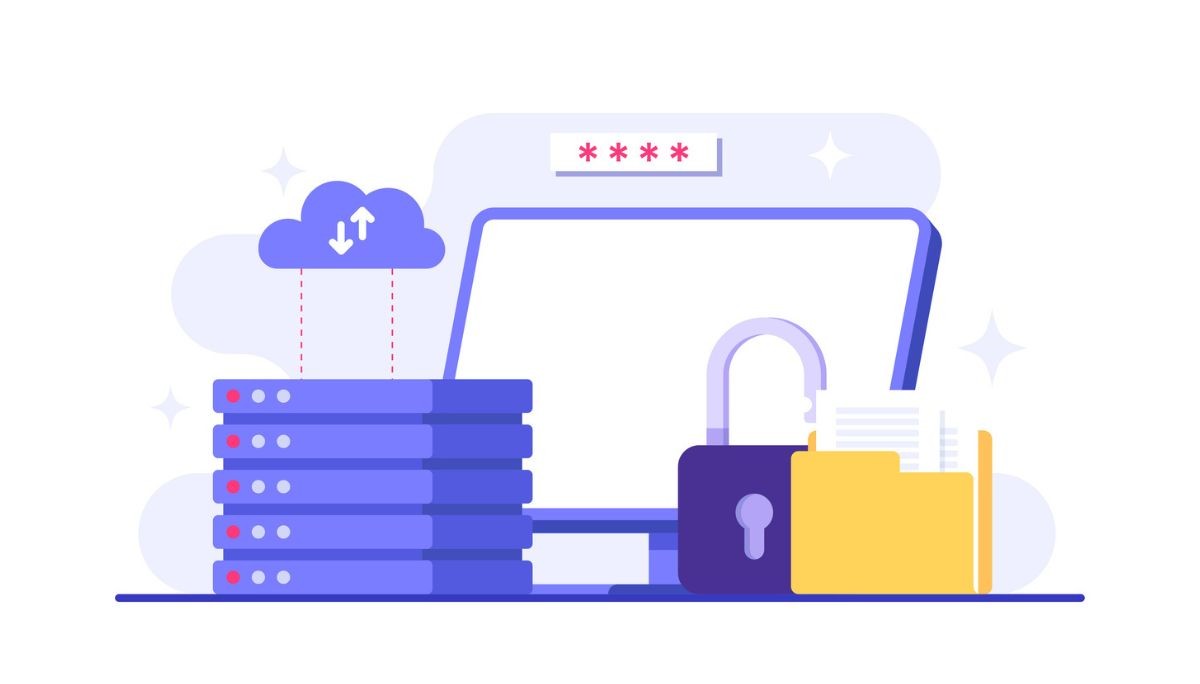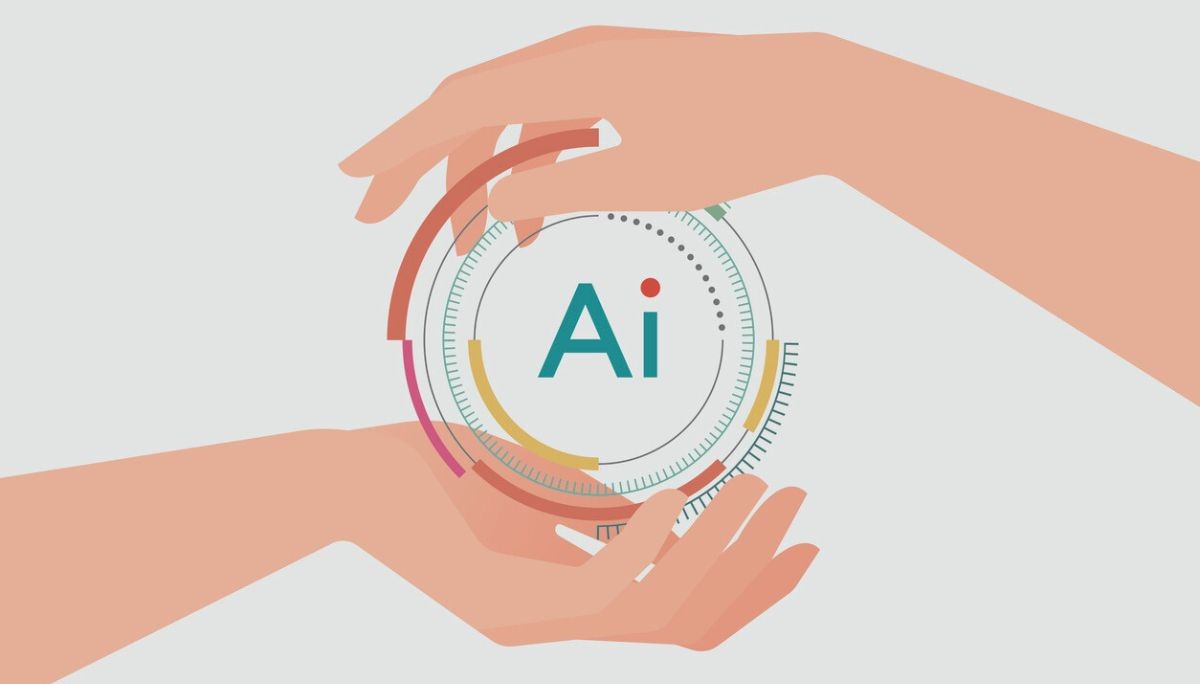GPU in Cloud Computing: What It Is and Why It Matters
By
Ethan Fahey
•
Sep 4, 2025
What is a GPU in cloud computing, and why does it matter? Cloud GPUs offer massive computational power for tasks like AI training, graphics rendering, and scientific simulations. They provide scalable and cost-effective solutions, enabling businesses to handle large datasets and perform complex calculations efficiently. Discover the key benefits of cloud GPUs and the top providers offering these powerful resources. For recruiters and AI-focused teams, tools like Fonzi AI can help identify talent skilled in leveraging cloud GPUs, ensuring companies have the expertise needed to maximize these powerful resources.
Key Takeaways
GPUs in cloud computing excel at parallel processing, making them ideal for AI modeling, graphics rendering, and scientific simulations, offering significant computational power and scalability.
Cloud GPUs provide dynamic scalability and cost-effective pay-as-you-go pricing, allowing organizations to adjust resources based on workload demands without substantial upfront investments.
Major cloud providers like AWS, GCP, and Azure offer diverse GPU instances tailored to various applications, while specialized providers like Lambda Labs, CoreWeave, and TensorDock focus on optimized solutions for specific tasks.
Understanding GPU in Cloud Computing

GPUs have become essential in cloud computing for tasks requiring significant computational power. Unlike traditional CPUs designed for sequential processing, GPUs excel in parallel processing, handling multiple tasks simultaneously. This makes them ideal for high-performance computing (HPC) tasks like AI modeling, graphics rendering, and scientific simulations.
The architecture of GPUs allows them to deliver massive computing power and scalability, which are crucial for applications in AI, HPC, and data analytics. Training deep learning models requires significant computational resources for processing large datasets and performing complex calculations rapidly. Cloud GPUs, with their optimized architecture, speed up these processes, making it feasible to train and deploy sophisticated AI models promptly.
NVIDIA, a leader in the GPU industry, plays a pivotal role in cloud computing by offering a platform that provides GPU-optimized software. This ensures consistent performance and scalability across various cloud environments. Technologies like NVIDIA CUDA further enhance the capabilities of cloud GPUs, enabling developers to leverage the full potential of these powerful processors.
Key Benefits of Cloud GPUs

One of the most compelling benefits of cloud GPUs is their dynamic scalability. Cloud computing platforms allow resources to be adjusted based on fluctuating workloads, enabling users to scale up or down as needed without significant delays. This flexibility benefits organizations with varying computational demands, ensuring they only pay for the resources they use, making it cost-effective.
The pay-as-you-go pricing models offered by cloud providers further enhance cost efficiency. This model allows users to access powerful computational resources without the need for substantial upfront investments. Startups and smaller enterprises, in particular, can leverage cloud GPUs to compete on a level playing field with larger organizations by accessing the same high-performance resources.
Performance enhancements provided by cloud GPUs lead to improved resource utilization and faster processing capabilities. This means that tasks such as AI training, machine learning, and graphics rendering can be completed more efficiently, reducing time to market for new products and innovations. Moreover, technologies like NVIDIA RAPIDS accelerate data science workflows, enabling quicker insights and decision-making.
Top Cloud Providers for GPU Instances

In the competitive landscape of cloud computing, several providers stand out for their GPU offerings. Top providers like Amazon Web Services (AWS), Google Cloud Platform (GCP), and Microsoft Azure offer a range of GPU instances catering to different needs and applications. These cloud environments provide robust infrastructure and advanced features to support high-performance computing tasks.
AWS, the largest cloud platform provider, offers a diverse range of GPU types through its EC2 service. Google Cloud Platform (GCP) has introduced A3 Ultra instances featuring NVIDIA H200 GPUs, significantly enhancing AI performance with AI hardware.
Microsoft Azure, known for its deep learning and simulation capabilities, continues to innovate with its GPU offerings.
Amazon Web Services (AWS)
Amazon Web Services (AWS) stands as a titan in the cloud computing world, renowned for its flexibility, scalability, and extensive range of services. Through its Elastic Compute Cloud (EC2), AWS provides GPU-powered virtual machines that cater to high-performance computing and AI applications. The variety of GPU types, including the A100 and V100, allows users to choose the most suitable option for their specific needs, whether it be for AI workloads or graphics rendering.
AWS’s EC2 service is not only about flexibility but also about cost efficiency. With options like savings plans for high-performance AI workloads, AWS ensures that users can optimize their costs while accessing top-tier computational resources. AWS is a prominent choice for organizations seeking GPU cloud solutions for demanding applications.
Google Cloud Platform (GCP)
Google Cloud Platform (GCP) is another heavyweight in the cloud computing arena, offering advanced GPU instances that cater to AI and machine learning needs. The introduction of A3 Ultra instances featuring NVIDIA H200 GPUs marks a significant leap in AI performance, providing the computational power required for training complex models and handling intensive workloads. These instances are designed to deliver high performance, making them ideal for AI applications, and can be managed through your cloud account in a GPU cloud-built environment.
One of the standout features of GCP’s GPU instances is their seamless integration with Google Kubernetes Engine (GKE). This integration supports scalable and efficient AI application deployment, enabling developers to manage and scale workloads effortlessly. With pre-configured templates and robust support for AI frameworks, GCP provides a comprehensive solution for organizations looking to leverage cloud GPUs.
Microsoft Azure
Microsoft Azure, a key player in the cloud computing platform space, offers GPU instances tailored for deep learning and high-performance computing applications. Azure’s GPU offerings are particularly beneficial for tasks such as scientific simulations and AI model training, providing the necessary computational power to handle these demanding workloads. Azure’s infrastructure supports a wide range of industries, from healthcare to finance, enabling them to leverage cloud GPUs for their specific needs.
Rumors of Microsoft developing its own chips further underscore the company’s commitment to innovation and performance optimization for the future. This potential development could lead to even more efficient and powerful GPU instances, enhancing Azure’s position as a leading provider of cloud computing solutions.
Specialized GPU Cloud Providers

While major cloud providers like AWS, GCP, and Azure dominate the market, specialized GPU cloud providers are carving out their niche by offering tailored solutions optimized for specific applications. These providers often focus on:
Delivering high-performance GPU resources for AI and machine learning tasks
Catering to the unique needs of their customers
Focusing on niche markets
Launching recently introduced services, indicating a commitment to innovation and specialization
Three specialized GPU cloud providers, Lambda Labs, CoreWeave, and TensorDock, offer unique advantages. These include on-demand access to high-performance GPUs, extensive inventories, and competitive pricing models. We will examine what sets each apart.
Lambda Labs
Lambda Labs has made a significant shift from being a hardware-centric company to providing a cloud platform for GPU access since 2018. This transition has enabled Lambda Labs to offer a variety of NVIDIA GPU configurations, including the powerful NVIDIA H100 Tensor Core GPUs, on demand. These GPUs cater to AI training, fine-tuning, and inference workloads, providing the computational power needed for complex tasks.
Users can access Lambda Labs’ GPU instances through one-click Jupyter access directly from their browsers, simplifying the process of launching and managing instances. Additionally, the Lambda Cloud API allows for seamless integration and automation, making it easier for developers to leverage these powerful resources for their projects.
CoreWeave
CoreWeave has established itself as an elite cloud services provider, particularly recognized for its extensive GPU resources optimized for AI applications. With a substantial inventory of 45,000 GPUs, CoreWeave offers significant computational power to handle the most demanding AI and machine learning tasks. This extensive resource pool allows them to provide robust and scalable solutions tailored to the needs of various industries.
Moreover, CoreWeave’s integration with NVIDIA’s DGX Cloud enhances its capabilities, offering users access to the powerful GPU resources necessary for high-performance computing. This integration ensures that users can leverage the best of both worlds: the extensive GPU inventory of CoreWeave and the advanced technologies provided by NVIDIA.
TensorDock
TensorDock is known for providing affordable and easy access to cloud GPUs, catering to a wide range of AI applications. With a diverse offering of 45 GPU models, from RTX 4090 to HGX H100 SXM5 80GB, TensorDock ensures that users can select the most suitable GPU for their specific performance needs. This flexibility allows for optimized performance across various tasks, from AI training to graphics rendering.
Pricing is one of TensorDock’s standout features, with services starting as low as $0.012 per hour and consumer GPUs available from $0.12 per hour. Premium H100 GPUs are competitively priced at $2.25 per hour, reflecting TensorDock’s commitment to providing cost-effective solutions.
Additionally, TensorDock maintains a 99.99% uptime standard and offers up to 5x inference value for users, ensuring reliability and performance.
Choosing the Right GPU Instance for Your Needs

Selecting the right cloud GPU instance is crucial for optimizing both performance and costs. The ideal GPU instance depends on your project’s specific requirements, such as model complexity, dataset size, and the nature of the computational tasks. Multi-GPU instances can be resized to meet changing demands, providing flexibility and scalability for various applications.
We will explore key factors to consider, compare costs across providers, and discuss the importance of performance benchmarks to aid your decision. These subsections will guide you in making an informed choice that aligns with your project’s needs and budget constraints.
Factors to Consider
When selecting a cloud GPU, it’s essential to consider the specific requirements of your project. Key factors include:
The complexity of the model
Memory size of the GPU
Core count of the GPU
Evaluating GPU models based on their performance metrics ensures they meet the needs of your particular AI or machine learning task.
Additionally, the type of workload, whether it be gaming, machine learning, or rendering, plays a crucial role in determining the appropriate GPU instance with one or more GPUs. Budget constraints should also guide your selection to ensure alignment with financial resources.
Choosing the right GPU instance is crucial to avoid unnecessary delays and additional costs that arise from hourly billing. By carefully considering these factors, you can optimize both performance and cost-effectiveness for your project.
Comparing Costs
Understanding the pricing models for cloud GPUs is vital for choosing the most cost-effective option. Providers typically offer:
On-demand pricing for flexible usage.
Reserved instances for long-term commitments.
Pricing that can be as low as $0.03 per hour for basic models.
Billing based on minute usage, which can help reduce expenses for short-term tasks.
Monitoring your usage accurately is essential to managing costs effectively, as GPU providers usually charge by the hour. Transparent pricing and understanding egress fees are crucial for managing servers and finding the best balance between performance and cost.
By comparing these costs, you can ensure that you are making a cost-effective decision that aligns with your project’s financial constraints.
Performance Benchmarks
Performance benchmarks provide valuable insights into how different GPU models perform under specific workloads, helping users choose the most suitable option for their needs. Benchmarks consider factors such as speed, efficiency, and capability under various workloads, offering a comprehensive view of each GPU’s performance.
By analyzing these benchmarks, you can make an informed decision about which GPU instance will deliver consistent performance for your compute workloads. This ensures that your chosen GPU meets the demands of your project, whether it involves AI training, graphics rendering, or high-performance computing.
Deploying Machine Learning Models on Cloud GPUs
Deploying machine learning models on cloud GPUs offers significant advantages in terms of speed and efficiency. GPUs accelerate both the training and inference phases, enhancing the overall efficiency of model deployment. Rapid processing is crucial for developing and refining AI models, enabling quicker iterations and improvements.
Cloud GPUs facilitate quick AI model deployment with:
Pre-configured templates for popular frameworks, aiding rapid model fine-tuning and improving accuracy.
Containerizing the model in a Docker image to ensure consistent execution across different environments.
CI/CD processes that automate the steps from code changes to model updates, minimizing manual interventions and reducing deployment time. Additionally, users can fine tune models to achieve optimal performance.
Real-World Applications of Cloud GPUs
Cloud GPUs have a wide range of real-world applications, from AI training to high-performance graphics rendering and scientific computing. These applications benefit from the enhanced performance and parallel processing capabilities of GPUs, making them ideal for complex tasks that require significant computational power.
The following subsections will delve into specific examples of how cloud GPUs are utilized in various fields.
AI Training and Inference
The specialized processing cores in GPUs allow them to handle data-intensive tasks common in AI applications. Originally designed for graphics rendering, GPUs have become crucial in AI, enabling the training of complex models. High-performance GPUs in cloud computing benefit applications like computer vision, where fast data processing and data interpretation are essential.
Cloud GPUs are enhancing AI solutions in sectors such as healthcare, finance, and technology, providing the computational power needed for advanced AI workloads. A research team reported three times faster training of protein language models using DGX Cloud, highlighting significant performance improvements with cloud GPUs.
High-Performance Graphics Rendering
Cloud-based applications for graphics rendering eliminate the need for expensive hardware, providing high performance for tasks like graphic design, 3D modeling, and simulation. These applications benefit from the fast iteration and rendering capabilities of NVIDIA GPUs, enabling creators to produce high-quality graphics efficiently in the clouds through virtualization.
Cloud GPU resources also significantly expedite the video encoding process, which is crucial for processing high-resolution video data. Services like TensorDock are well-suited for gaming, image processing, and rendering tasks, offering the necessary computational power to handle these demanding applications.
Scientific Computing and Simulations
GPUs have become essential in various fields beyond gaming, including scientific simulations and machine learning. Cloud-based GPUs play a vital role in scientific research, enabling extensive simulations that demand high computational power. Researchers leverage cloud GPUs to conduct complex scientific computations with enhanced efficiency, driving discoveries and innovations in various fields.
Performance benchmarks help users understand the comparative efficiency of different GPU instances in real-world applications, ensuring that they select the most suitable option for their scientific computing needs. This allows researchers to leverage cloud GPUs’ computational power to advance their work.
Data Security and Compliance in Cloud Environments
Ensuring data security and compliance is paramount when using cloud GPUs. Cloud providers implement robust security measures to protect data, ensuring safety and privacy. Monitoring tools can detect unusual GPU usage, helping to identify and mitigate potential security threats such as cryptojacking or denial-of-service attacks.
Using Hardware Security Modules (HSMs) for critical cryptographic operations bolsters security, providing an additional layer of protection for sensitive data. Cloud services also simplify infrastructure management by handling hardware maintenance, reducing the organizational burden, and allowing teams to focus on their core tasks.
How Fonzi Enhances AI Talent Hiring for Cloud Projects
Fonzi is an AI engineering talent marketplace that connects organizations with skilled artificial intelligence professionals. By leveraging structured evaluations to assess AI talent, Fonzi ensures that only qualified candidates are presented to employers, maintaining the integrity of the hiring process through fraud detection and bias auditing. This streamlines the recruitment process, reducing time and resources spent on hiring.
Fonzi provides access to a diverse pool of AI talent, enhancing innovative capabilities for cloud project developers and AI inference in the enterprise, including generative AI. The platform’s efficiency in matching companies with the right experts supports optimal project delivery and success.
Let’s explore what Fonzi is, how it works, and why it’s the go-to choice for AI talent hiring.
What is Fonzi?
Fonzi is an AI engineering talent marketplace that connects companies to top-tier, pre-vetted AI engineers through its recurring hiring event, Match Day. This event ensures that organizations can quickly and efficiently find the right talent for their projects, leveraging a pool of highly skilled professionals.
How Fonzi Works
Fonzi operates as a specialized platform that connects top-tier AI engineers with innovative startups and technology firms. The platform delivers high-signal, structured evaluations with built-in fraud detection and bias auditing, ensuring a higher standard of recruitment integrity compared to traditional job boards.
Why Choose Fonzi?
Fonzi allows companies to acquire elite AI engineers rapidly, significantly reducing the time to hire. With personalized support from a dedicated recruiter, Fonzi enhances the experience for both candidates and companies, ensuring engaged and well-matched talent.
Table: Comparison of GPU Cloud Providers
To help you make an informed decision, we present a comparative table of different GPU cloud providers. This table highlights key metrics such as GPU models offered, pricing, performance, and special features, providing a comprehensive overview of what each provider brings to the table. Whether you need high-performance GPUs for AI training or cost-effective options for graphics rendering, this comparison will guide you in selecting the best provider for your needs.
Google Cloud Platform, ranked as the third biggest cloud platform, offers robust GPU instances with seamless integration capabilities. TensorDock, operating Tier 3/4 quality data centers, provides affordable and high-performance GPU resources, making it an enterprise-grade competitive option for various applications.
This table serves as a valuable resource for comparing the offerings of top GPU cloud providers.
Summary
In summary, cloud GPUs are revolutionizing the field of high-performance computing, offering dynamic scalability, cost-efficiency, and significant performance enhancements. Top cloud providers like AWS, GCP, and Azure, along with specialized providers like Lambda Labs, CoreWeave, and TensorDock, offer a range of GPU instances to cater to diverse needs and applications. From AI training to scientific simulations, cloud GPUs enable organizations to leverage powerful computational resources without substantial upfront investments.
As we navigate the evolving landscape of cloud computing, selecting the right GPU instance and ensuring data security remain critical considerations. Platforms like Fonzi enhance AI talent hiring, connecting organizations with skilled professionals to drive innovation and success in cloud projects. Embrace the power of cloud GPUs to unlock new possibilities and stay ahead in the digital age.




